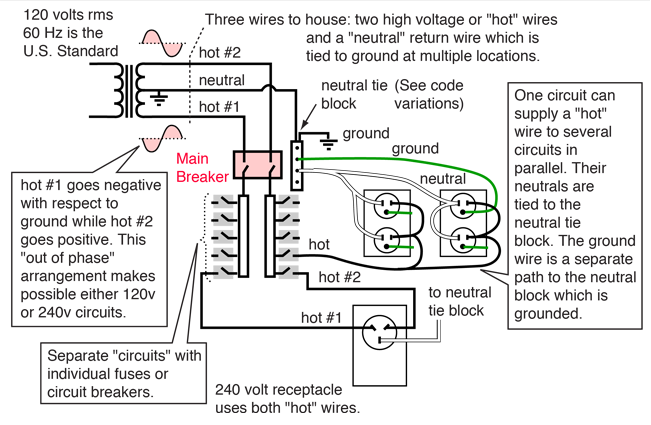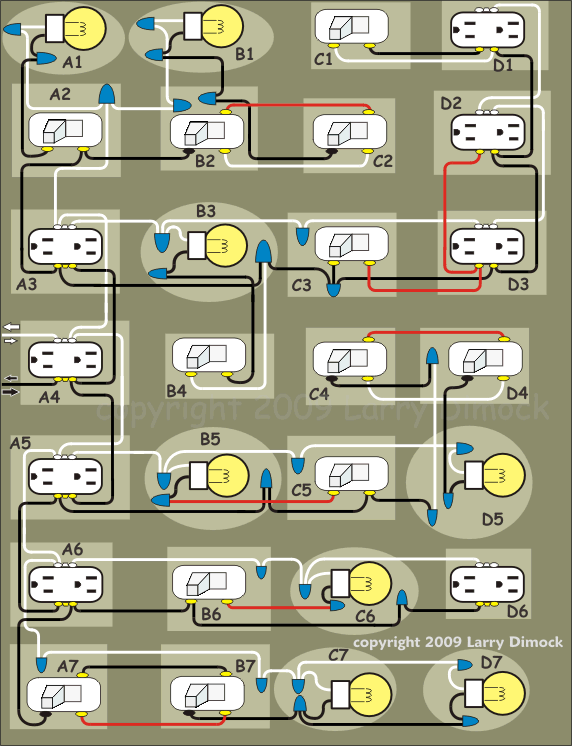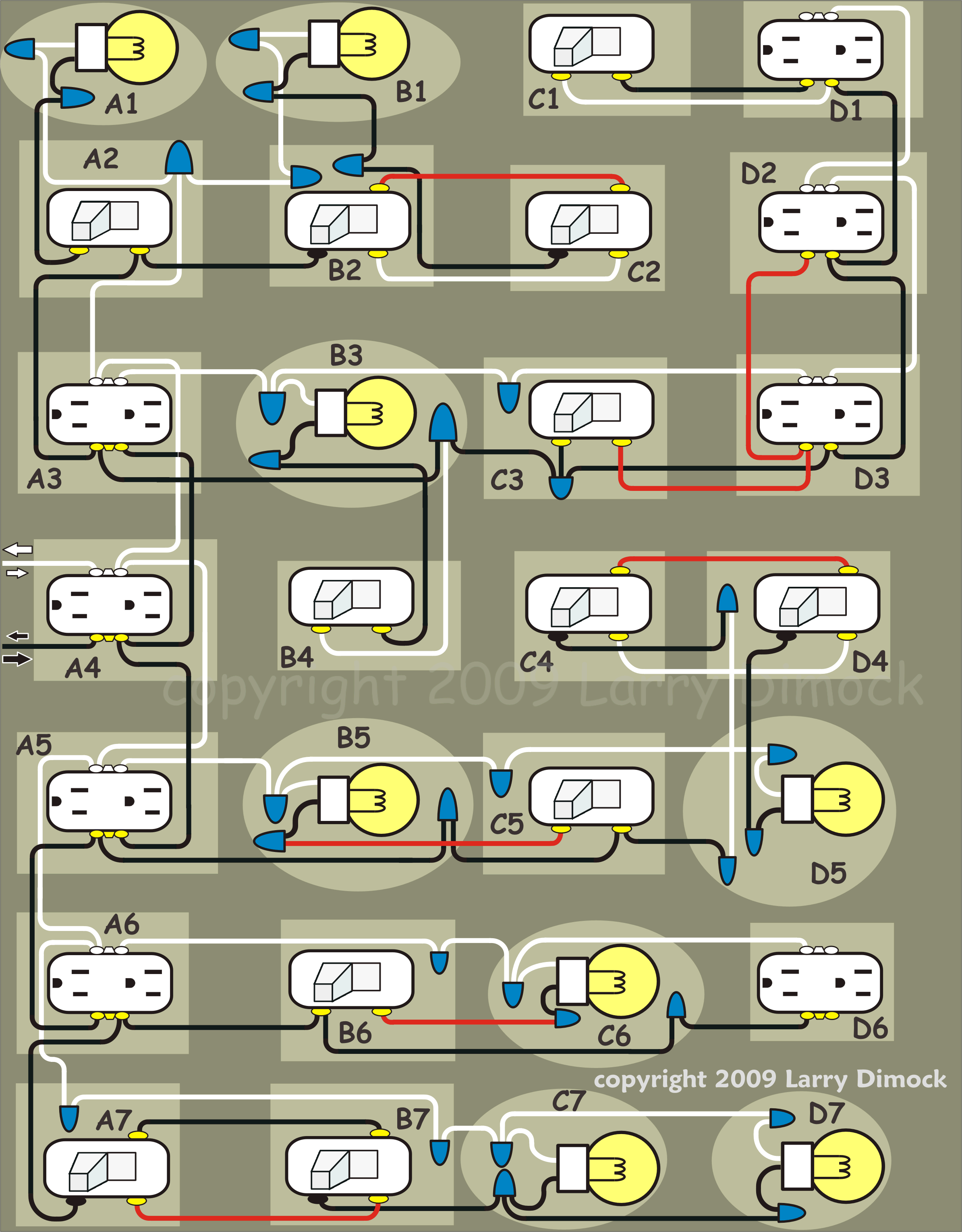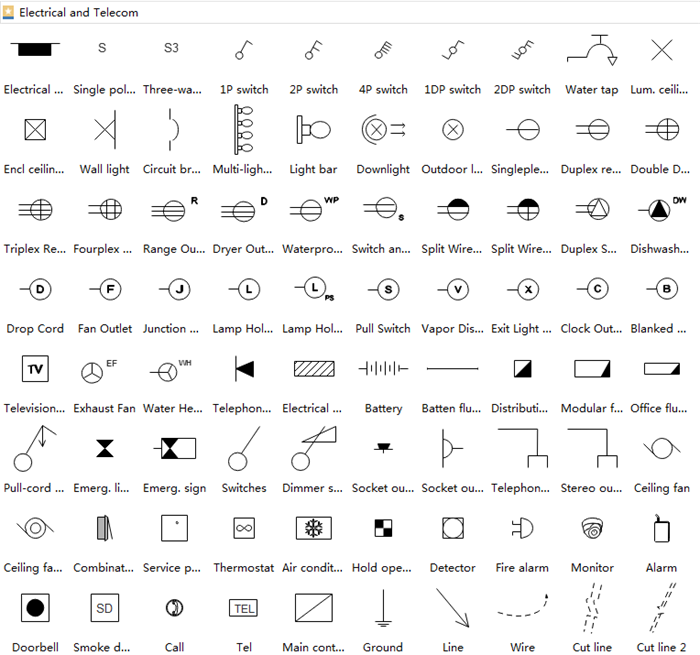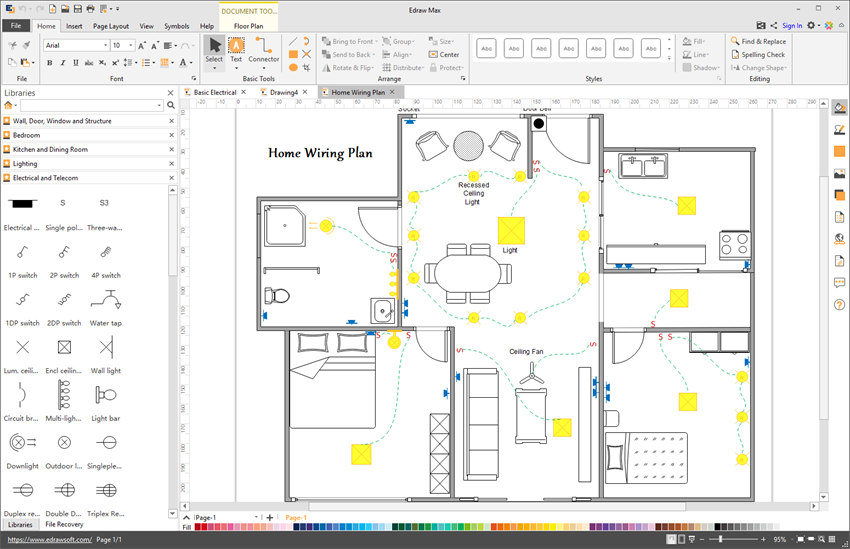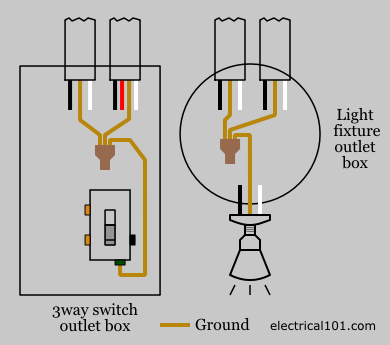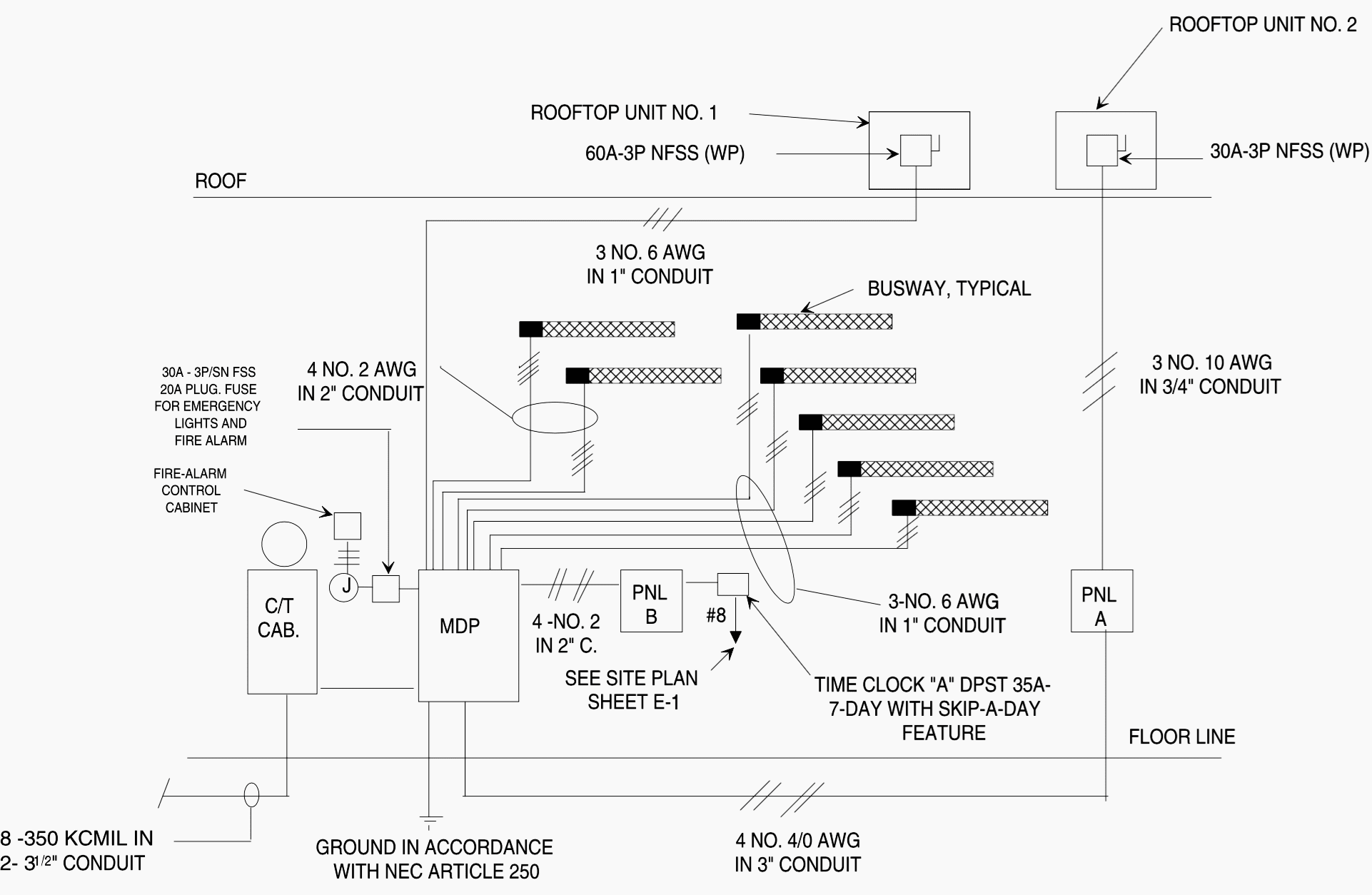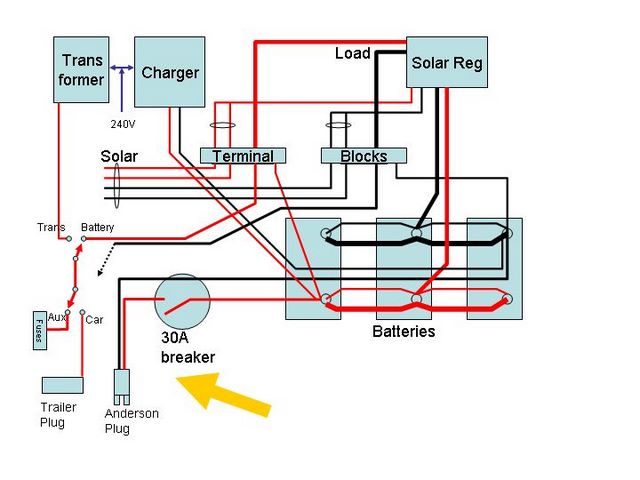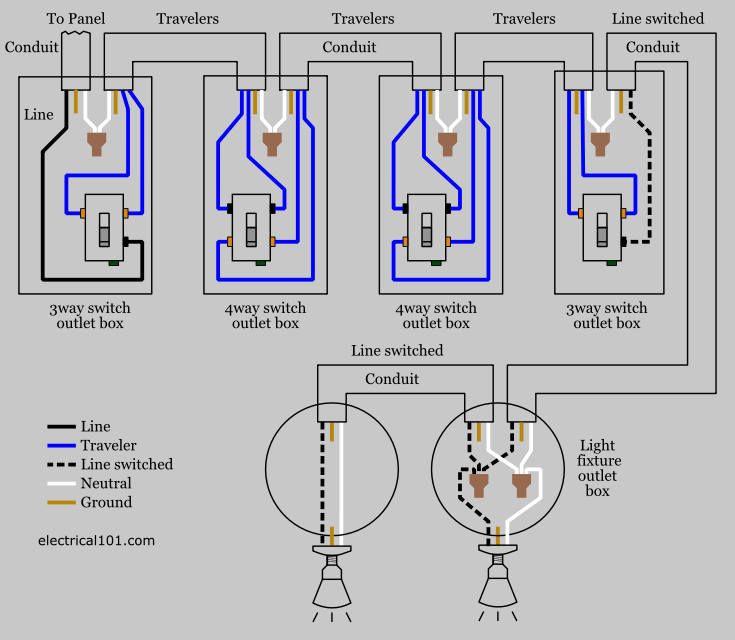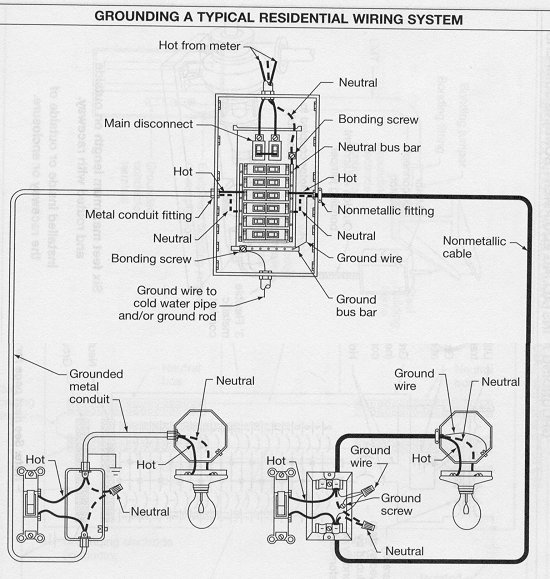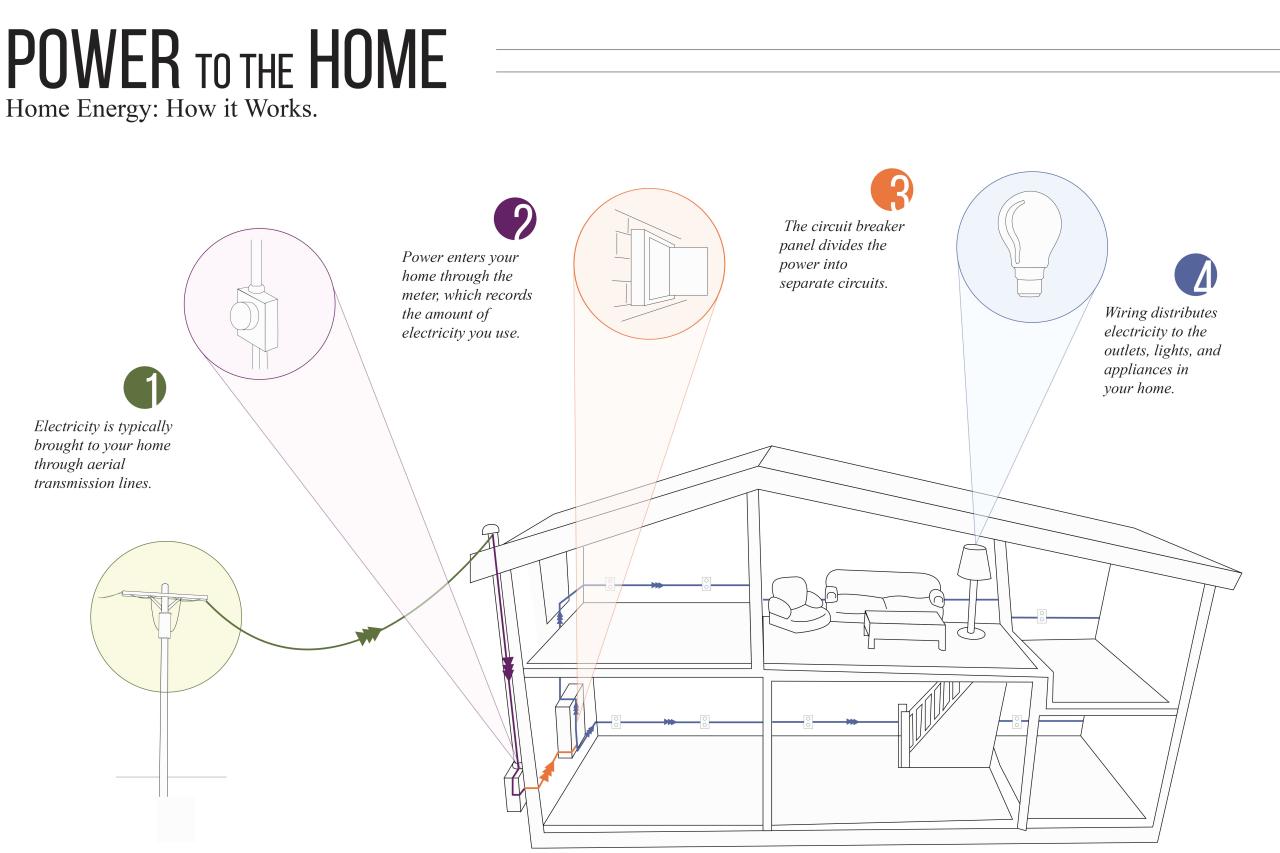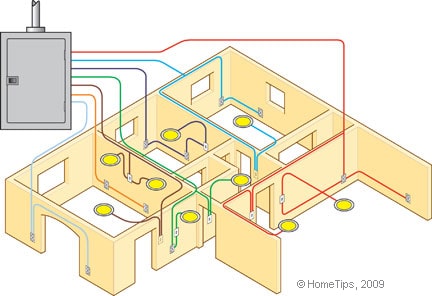Romex shown in yellow above is the trade name for a type of electrical conductor with non metallic sheathing that is commonly used as residential branch wiring. In general however there are only a couple varieties used for wiring a residential home.

Electrical System
Typical home wiring diagram. The home electrical wiring diagrams start from this main plan of an actual home which was recently wired and is in the final stages. This gallery contains network diagrams for wireless wired and hybrid home networks. The home electrical wiring diagrams start from this main plan of an actual home which was recently wired and is in the final stages. Many home network layouts work fine but most are variations on a basic set of common designs. In fact romex will be the most common cable youll use in wiring a house. Each network diagram includes a description of the pros and cons of that particular layout as well as tips for building it.
Electricity travels in a circle. Adjoining wire routes may be revealed about where particular receptacles or components need to get on a common circuit. These links will take you to the typical areas of a home where you will find the electrical codes and considerations needed when taking on a home wiring project. Double wide mobile home electrical wiring diagram building circuitry diagrams show the approximate locations and affiliations of receptacles illumination as well as permanent electrical solutions in a structure. The important components of typical home electrical wiring including code information and optional circuit considerations are explained as we look at each area of the home as it is being wired. Having a map of your homes electrical circuits can help you identify the source of a problem.
It moves along a hot wire toward a light or receptacle supplies energy to the device called a load and then returns along the neutral wire so called because under normal conditions its maintained at 0 volts or what is referred to as ground.

